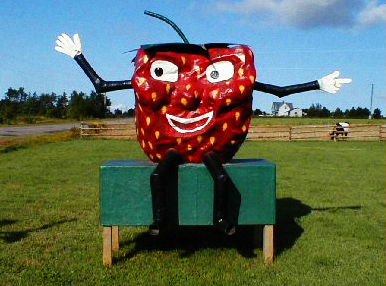This is embarrassing, but when I was first invited to be one of the judges for the Potato Seafood Chowder Championship on Prince Edward Island, I said yes thinking it would also allow me to spend a few days in one of my favorite cities of the world, Vancouver.
Because isn’t PEI one of those places between Vancouver and Vancouver Island? You know, Salt Spring and Cortes and Prince Edward Island, right? So when I got my itinerary and saw that I had to fly into Detroit—Detroit?—I thought, That’s just wrong. Why would they fly me to Detroit to get to Vancouver?
At that point I googled Prince Edward Island and guess what? It’s nowhere near Vancouver. In fact, it’s on the exact opposite end of Canada. In the Atlantic, not the Pacific; near Nova Scotia, not British Columbia.
So what do I know about Prince Edward Island?
Nothing.
Except when you come over Confederation Bridge, Canada’s $1 billion bridge to nowhere (more than 40 percent of the islanders voted against building it in 1992), what strikes you are all the odd little provincial blue highway signs that don’t just point you towards Charlottetown or Cavendish but give you culinary information: Fresh Produce, Lobster Suppers, Afternoon Tea.
Imagine, you’re driving down this little two-lane country road and there’s a sign telling you where to turn for a lobster supper. I think I like it. Sort of.
With summer over and the tourist season just weeks away from shutting down, it seems everyone on the island is selling fruits and vegetables. Everywhere you go are little stands with homemade signs promising PEI potatoes or beets or pumpkins. Or, my favorite, a Humpty-Dumpty like strawberry sitting on a green stool in a cow pasture pointing the way to fresh berries.
Those not selling produce are, instead, offering up the sort of things semi-retired men whose wives prefer they not spend their free hours hovering in the kitchen make out in their wood shops: birdhouses roofed with old license plates, bright red Adirondack chairs, weathervanes shaped like cows or pigs or roosters.
This says a lot about the people who live here, don’t you think? They are clever, industrious—and have a lot of free time in the winter.
Tags: Canada, Prince Edward Island


Recent Comments